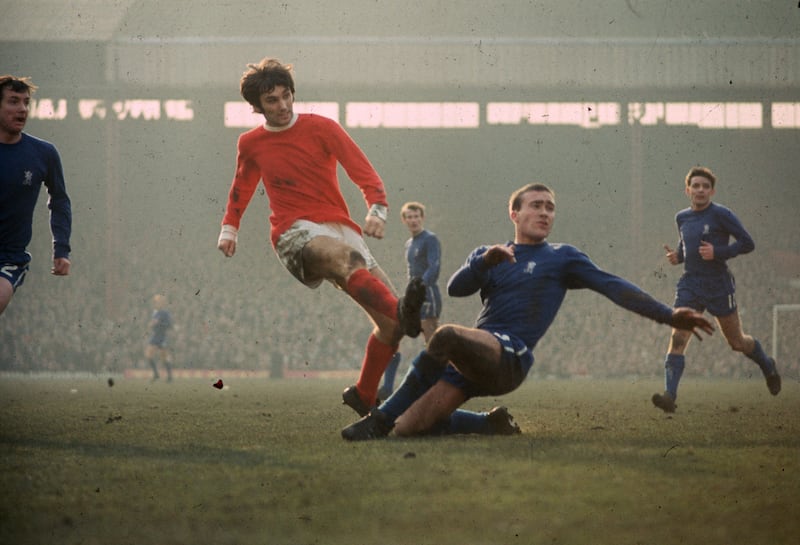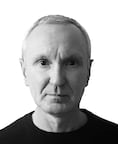Manchester, football and a warm night in August 1992: informed by our television masters that what we were going to see on this Monday night was a whole new ball game, we still walked warily through the old, scuffed streets of Rusholme to reach the decaying walls of Maine Road with its ancient turnstiles to jostle on a concrete corner of the epic Kippax Stand, and clearly it wasn’t all new.
And yet it was.
This was still Manchester and still quintessential English football. Out there on vast Maine Road, Niall Quinn still led the line for Manchester City and Alan McDonald still kicked him for Queens Park Rangers.
The new hullabaloo surrounded BSkyB’s takeover of English football and their breakaway Premier League. This was the first weekend of its first season. It was the first Monday night football.
READ MORE
There were 24,471 there. It finished 1-1 and the memory is of the novelty of the day and, simultaneously, the reassuring familiarity of it all as captured in a slice of traditional terrace abuse. Ray Wilkins was told, emphatically, by one City fan that he was “all square balls and no d*ck”.
Wilkins had scored a brilliant goal in the FA Cup final almost a decade earlier. It was for Manchester United.
Today Wilkins is the kind of player Pep Guardiola would place in his midfield, an Ilkay Gundogan, collecting and dispensing possession in 10-yard measures.
Then City were a “hole in the sock club” according to Quinn; today United are a hole in the roof club. These are two separate Mancunian clubs, but they have flowed in and out of each other. Look at United’s record home attendance – 82,000: it was in 1948 and it was at Maine Road. Old Trafford had been bombed in the second World War. City leant United their ground.
Look at United’s manager – Matt Busby. He was on the way to becoming a Reds managerial legend by guiding them to the FA Cup in 1948, but he had previously been a Blues playing star for seven years, winning the Cup for City.
On today’s historic afternoon, when a first-ever Mancunian FA Cup final unfolds at Wembley, reflections on Manchester football inevitably involve such overlaps.
Back in 1992 Eamon Dunphy’s A Strange Kind of Glory had recently appeared in Manchester’s bookshops. Dunphy’s engrossing biography of Busby was also a story of the game in Manchester. Referring to the 19 year-old Busby’s arrival at City (from Scotland) in 1928, Dunphy wrote: “There was no place better than Manchester to begin to understand England’s national game.”
If not in terms of trophies, culturally the line could be justified – the International Football Association Board (IFAB), who govern the game’s laws, first gathered in the city in 1882 and as Dunphy explained when illustrating the life and times of arguably Manchester’s first football superstar – Billy Meredith – the Players’ Union came together there in 1907.
When City won their first FA Cup in 1904, Meredith scored the final’s only goal. He was 12 years at the club, then, after an allegation of bribery, he was signed by United. He stayed 15 years there, then went back to City for three more – Meredith, an early fitness enthusiast, played until he was 49.
Meredith was Welsh but he had a Mancunian swagger. He would later reveal City ignored the £4 maximum weekly wage and paid players £6 plus bonuses. This was a serious distortion for the authorities, though it was almost certainly going on at every club with ambition.
City gaming the system in 1904 will provoke wry smiles among United fans in 2023; then they will be reminded of Dubliner Patrick O’Connell’s part in the 1915 United match-fixing scandal with Liverpool. Footballers were not wealthy.
[ Patrick O’Connell: the Irish saviour of BarcelonaOpens in new window ]
Originally named after local areas – Ardwick for City, Newton Heath for United – the Manchester clubs were established civic institutions by that point. England had more successful clubs such as Aston Villa, but Manchester was becoming associated with Association football and vice versa. United won two league titles before the first World War.
City had brought the FA Cup to Maine Road in 1904 – when the Cup was considered the prize – but they were not champions of England until 1937. That came after the signing of Magherafelt genius Peter Doherty. As the Manchester Evening Chronicle wrote on the 30th anniversary of the feat: “If ever a player had everything, then that player was Peter Doherty.”

O’Connell, Doherty, Johnny Carey, there were Irishmen making major impressions on Mancunian football before the boy Best landed from Belfast in 1961 and helped internationalise United. Harry Gregg had literally saved the club at Munich, dragging Busby and others from the wreckage; now Best’s mesmeric ability took it to another level of fandom. United, global; City, local.
United won the title in 1965 and 1967 and when they were picking up the European Cup in 1968 – the first English club to do so – City were winning the league with a thoroughbred of their own, Colin Bell. When the Blues won the FA Cup a year later and the European Cup Winners’ Cup 12 months on, Manchester had a claim on being the capital of football.
[ Giants in Green: Michael Walker’s greatest all-time all-Ireland XIOpens in new window ]
But a summit had been reached. The journey down involved relegation for United in 1974 and for City in 1983. On that Monday night in 1992 neither club had been league champions since the 1960s.
A man called Ferguson was about to do something about that at Old Trafford. The stadium capacity was 45,000 then, but Alex Ferguson altered thoughts about United’s capacity in every sphere. As United rose to win a treble in 1999, City fell to the third division and post-match you would speak to manager Joe Royle on a Maine Road concourse as he sipped a can of Strongbow.
We did not know it, but City were on the brink of transformation – though so was the city itself. The IRA’s Manchester bomb was detonated during Euro ‘96 – Germany v Russia went ahead 24 hours later at Old Trafford – and some see the violence as a moment the city reviewed itself. Certainly the skyline looks little like it did in 1992.
But football continues to walk the pavements. Maine Road is no more, but from Blue Moon Way to Eddie Colman Close, over 20 Manchester streets are named after football.
The Premier League struts down each one of them. It was built on the back of a resurgent United and is now dominated by a reconstituted City. Both are foreign-owned, both have questions to answer, even on Cup final day. That early marketing was correct: It’s become a whole new ball game, with Manchester its Premier League capital.
















